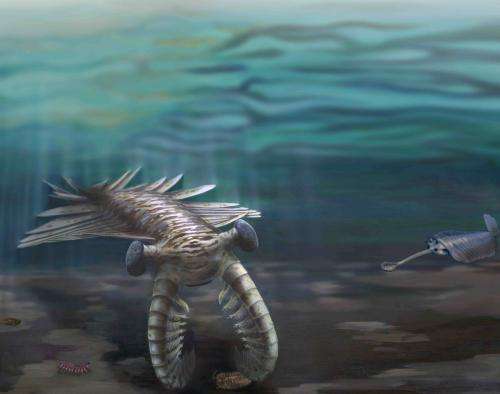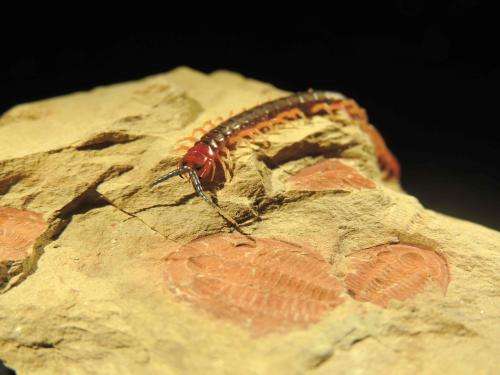Darwin's dilemma resolved: Biologists measure evolution's Big Bang

A new study led by Adelaide researchers has estimated, for the first time, the rates of evolution during the "Cambrian explosion" when most modern animal groups appeared between 540 and 520 million years ago.
The findings, published online today in the journal Current Biology, resolve "Darwin's dilemma": the sudden appearance of a plethora of modern animal groups in the fossil record during the early Cambrian period.
"The abrupt appearance of dozens of animal groups during this time is arguably the most important evolutionary event after the origin of life," says lead author Associate Professor Michael Lee of the University of Adelaide's School of Earth and Environmental Sciences and the South Australian Museum.
"These seemingly impossibly fast rates of evolution implied by this Cambrian explosion have long been exploited by opponents of evolution. Darwin himself famously considered that this was at odds with the normal evolutionary processes.
"However, because of the notorious imperfection of the ancient fossil record, no-one has been able to accurately measure rates of evolution during this critical interval, often called evolution's Big Bang.
"In this study we've estimated that rates of both morphological and genetic evolution during the Cambrian explosion were five times faster than today – quite rapid, but perfectly consistent with Darwin's theory of evolution."
The team, including researchers from the Natural History Museum in London, quantified the anatomical and genetic differences between living animals, and established a timeframe over which those differences accumulated with the help of the fossil record and intricate mathematical models. Their modelling showed that moderately accelerated evolution was sufficient to explain the seemingly sudden appearance of many groups of advanced animals in the fossil record during the Cambrian explosion.

The research focused on arthropods (insects, crustaceans, arachnids and their relatives), which are the most diverse animal group in both the Cambrian period and present day.
"It was during this Cambrian period that many of the most familiar traits associated with this group of animals evolved, like a hard exoskeleton, jointed legs, and compound (multi-faceted) eyes that are shared by all arthropods. We even find the first appearance in the fossil record of the antenna that insects, millipedes and lobsters all have, and the earliest biting jaws." says co-author Dr Greg Edgecombe of the Natural History Museum.
More information: Current Biology, Lee et al.: "Rates of Phenotypic and Genomic Evolution during the Cambrian Explosion." dx.doi.org/10.1016/j.cub.2013.07.055
Journal information: Current Biology
Provided by University of Adelaide




















